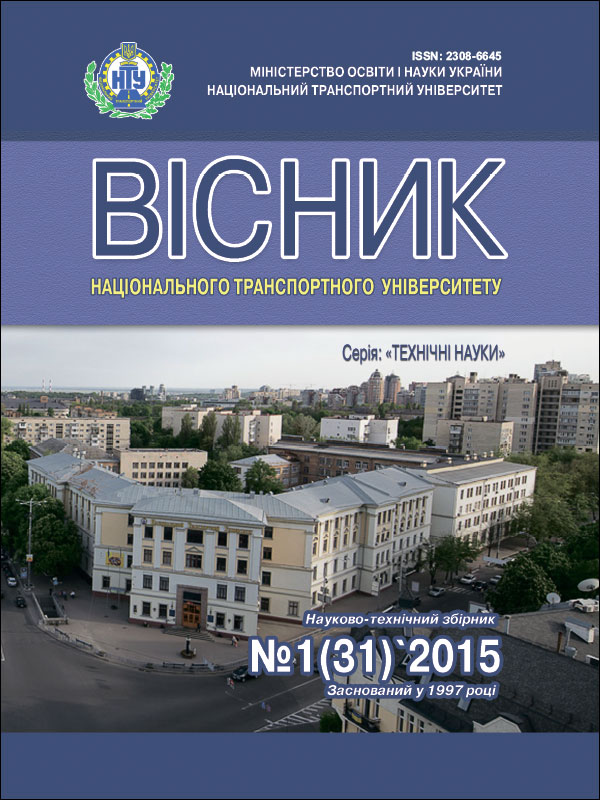COMBUSTION OF GASOLINE AND ETANOL MIXTURE
ABSTRACT
Konieczny D., Krawczuk S. Combustion of gasoline and etanol mixture. Visnyk of National Transport University. Series «Technical sciences». Scientific and Technical Collection. – Kyiv: National Transport University, 2021. – Issue 3 (50).
Thanks to the pressure of the Environmental Society, the priority of engine manufacturers is to reduce emissions of harmful substances into the atmosphere and reduce fuel consumption while constantly increasing engine performance. One way to overcome the aforementioned technical and social problems is to use alcohols, natural or synthetic, such as ethanol to power engines.
The objectives of manufacturers of alternative fuels is to provide consumers with the opportunity to use their product without changing the parameters of the main units in their vehicles, therefore the stoichiometry of the combustion of fuel mixtures is important, since this parameter can affect the amount of fuel burned, the quality of exhaust gases and the power of the internal combustion engine.
Combustion in a car engine is exothermic, which means that a side effect of this chemical reaction is heat released into the environment. The condition for starting the combustion process is the thermal coefficient – for spark ignition engines – a spark, and for diesel engines – heat during compression of the fuel-air mixture.
From the above it follows that after the oxidation reaction in the exhaust gases there should be no residual fuel particles, which in turn is an image of stoichiometric combustion. Since the stoichiometric mixture is very difficult to achieve outside laboratory conditions, a distinction is made between a non-greasy mixture (too much oxidizing agent) and a saturated mixture (too little oxidizing agent), but always strive to reach λ = 1, which corresponds to a stoichiometric mixture.
The heavy weight when working with ethanol fuel is the one that affects the operation of the engine and its components. Therefore, it is important to compare the physicochemical data of gasoline and ethanol, as well as mixed fuel – E85.
The article deals with the stoichiometry of combustion of an alternative fuel - a mixture of gasoline and ethanol. The economic and environmental conditions that initiated the production of this type of fuel were taken into account, the fuel mixtures were divided according to the content of fuel and oxidants in the combustion chamber. Attention is drawn to the determination of the stoichiometric mixture, as well as to the lambda coefficient (λ), which helps to determine the type of mixture. The properties of gasoline (in the form of iso-octane) and ethanol are described in separate sections and each is compared. One chapter is devoted to the description of the E85 mixture used in Flexi Fuel Vehicles engines, the requirements for this fuel are determined by the Minister of Economy on the requirements for the quality of biofuels, and attention is also paid to the effect of the mixture on the operation of the engine and the content of chemical compounds in the exhaust using E85 biofuel.
It has been established that ethanol fuel (in particular E100) is undoubtedly a step forward in terms of ecology, transport economics and the development of alternative fuels. However, its physicochemical properties cause many problems in engine operation. Despite the improvement in the net power generated by the engine, it should be remembered that for the current mechanical parts and their materials, this is a “problem” mixture that requires frequent and accurate diagnostics and calibration.
KEY WORDS: STOICHIOMETRIC MIXTURE, COMBUSTION, MIXTURE OF GASOLINE AND ETHANOL, ALTERNATIVE FUEL, IMPROVEMENT OF THE PHYSICAL AND CHEMICAL PROCESSES OF THE ENGINE.
REFERENCES
- Baczewski K., Kałdoński T., „Paliwa do silników o zapłonie iskrowym”, WKŁ 2015, Warszawa
- Żółty M., Stępień Z., „Paliwa etanolowe w zastosowaniu do silników o zapłonie iskrowym”, NAFTA-GAZ, ROK LXXII, NR9/2016
- Pałuchowska M., Danek B., „Specyfikacje jakościowe bioetanolu i biopaliw do silników o zapłonie iskrowym”, NAFTA-GAZ, ROK LXV, luty 2009
- Stępień Z., Pałuchowska M., Żak G., „The prospects for the use of ethanol as a fuel component and its potential in the reduction of exhaust emissions”, Combustion Engines 2014, vol. 158, no. 3, PTNSS-2014-309,PL ISSN 0138-0346
- Praca zbiorowa pod redakcją Oleksiaka S., „Alcohol fuels for transport – background, research and development”, INiG, 2015, DOI: 10.18668/PN2015.204
- Pałuchowska M., Jakóbiec J., „Wpływ składu chemicznego benzyny i zawartości etanolu w kształtowaniu właściwości eksploatacyjnych.”, Autobusy – Technika, Esploatacja, Systemy Transportowe 2012, nr 7- 8, s. 56-50
- Mazanek A., Jakóbiec J., „Ocena jakości paliw silnikowych w badaniach eksploatacyjnych”, NAFTA-GAZ ROK LXV styczeń 2009
- Małek A., Szlachetka M., Stępniewski A., Majczak A., Magryta P., „Badania w warunkach drogowych pojazdu z silnikiem benzynowym zasilanych paliwem E85”, Autobusy – Technika, Eksploatacja, Systemy Transportowe, 10/2011
- https://x-engineer.org/automotive-engineering/internal-combustion-engines/performance/air-fuel-ratio-lambda-engine-performance/ (dostęp na dzień 28.03.2021)
AUTHORS
KONIECZNY Dariusz, Rzeszow University of Technology, Department of Automotive Vehicles and Transport Engineering, e-mail: dkoniecz@prz.edu.pl, tel.: +48178651679, 35-959, Rzeszow, Poland, Av. Powstancow Warszawy 12, orcid.org/0000-0001-9253-2925.
KRAWCZUK Sofia, Rzeszow University of Technology, Department of Automotive Vehicles and Transport Engineering, e-mail: 154478@stud.prz.edu.pl, tel.: +48178651679, 35-959, Rzeszow, Poland, Av. Powstancow Warszawy 12, orcid.org/0000-0002-2720-2644.
REVIEWERS
Woś P., Doctor of Technical Sciences, professor, Rzeszow University of Technology, head of the motor vehicles and transport engineering department, Rzeszow, Poland.
Gutarevych Yu.F. Doctor of Technical Science, National Transport University, Head of the of engines and heating department, Kyiv, Ukraine.
Article language: Polish
Open Access: http://publications.ntu.edu.ua/visnyk/50/104-112.pdf
Print date: 29.09.2021
Online publication date: 30.10.2021
